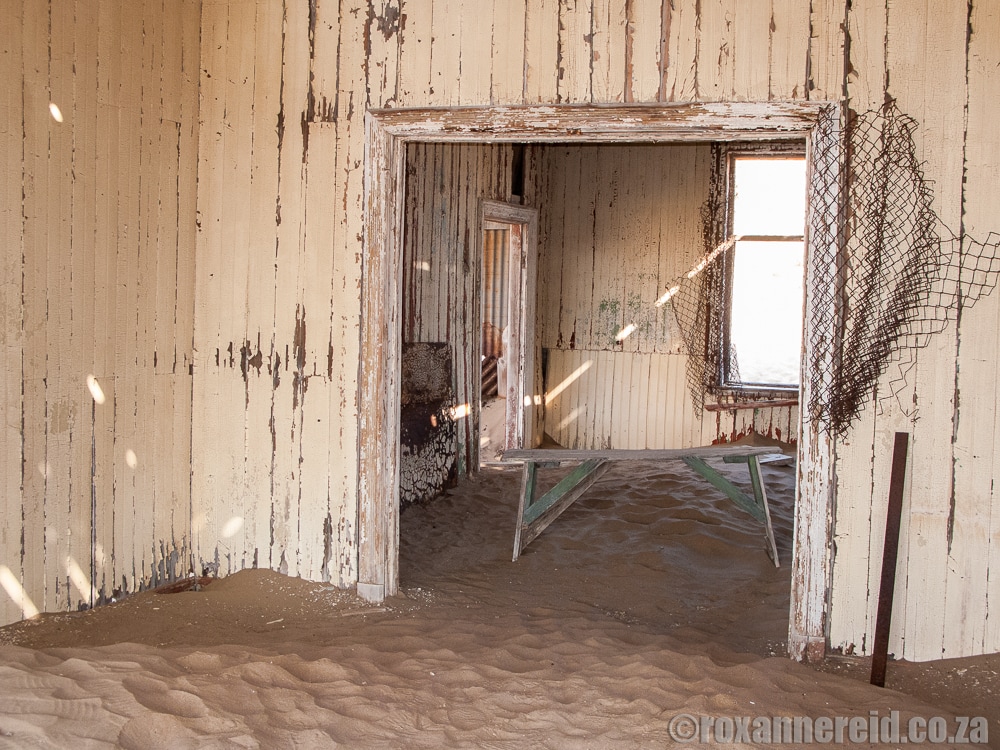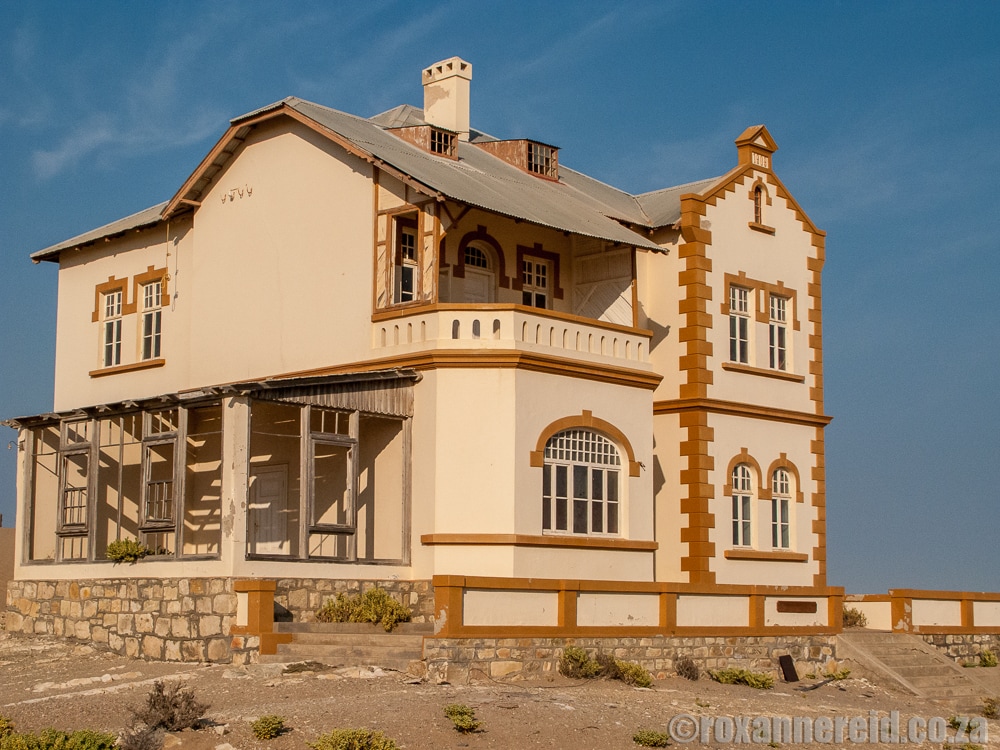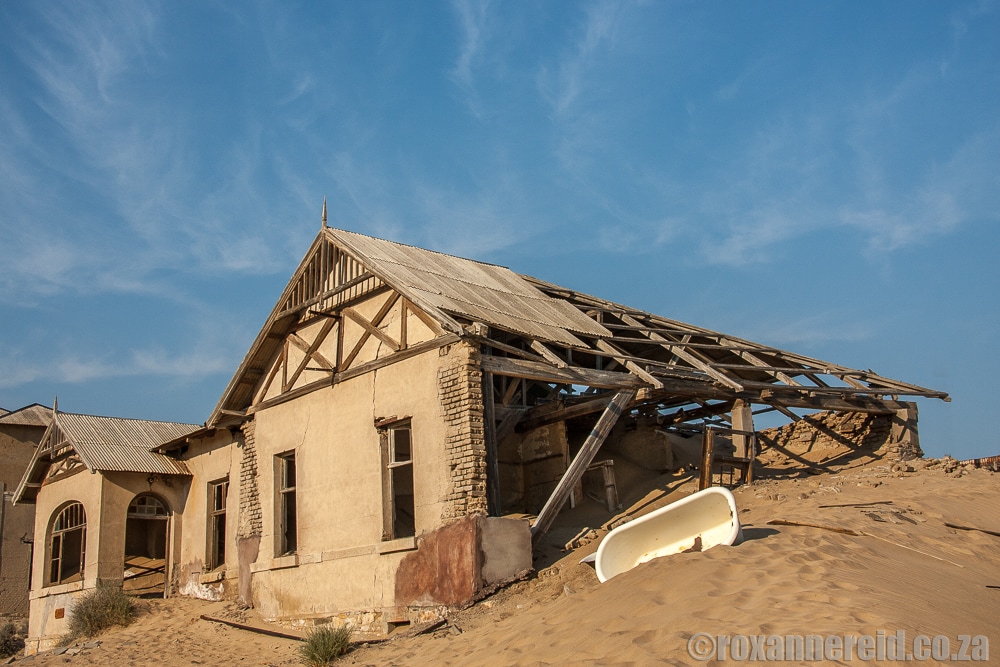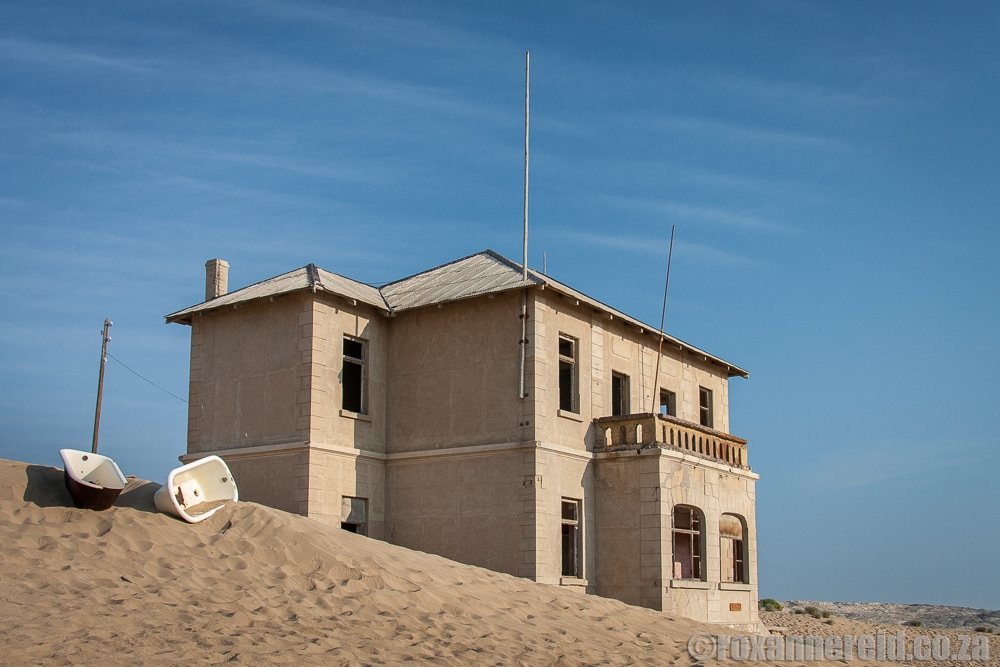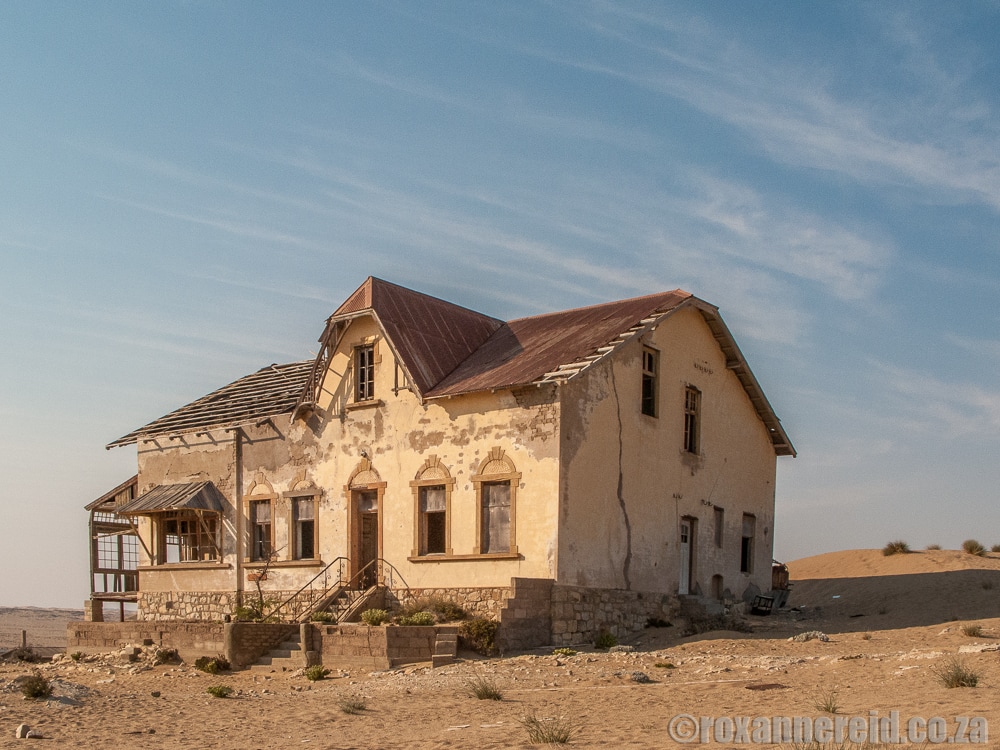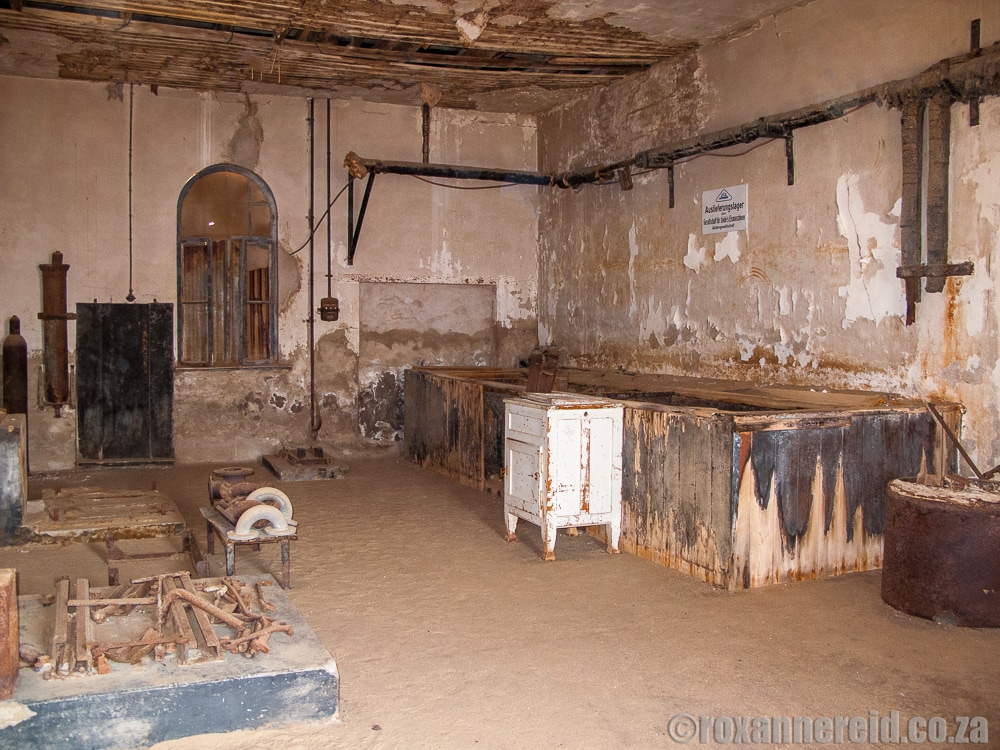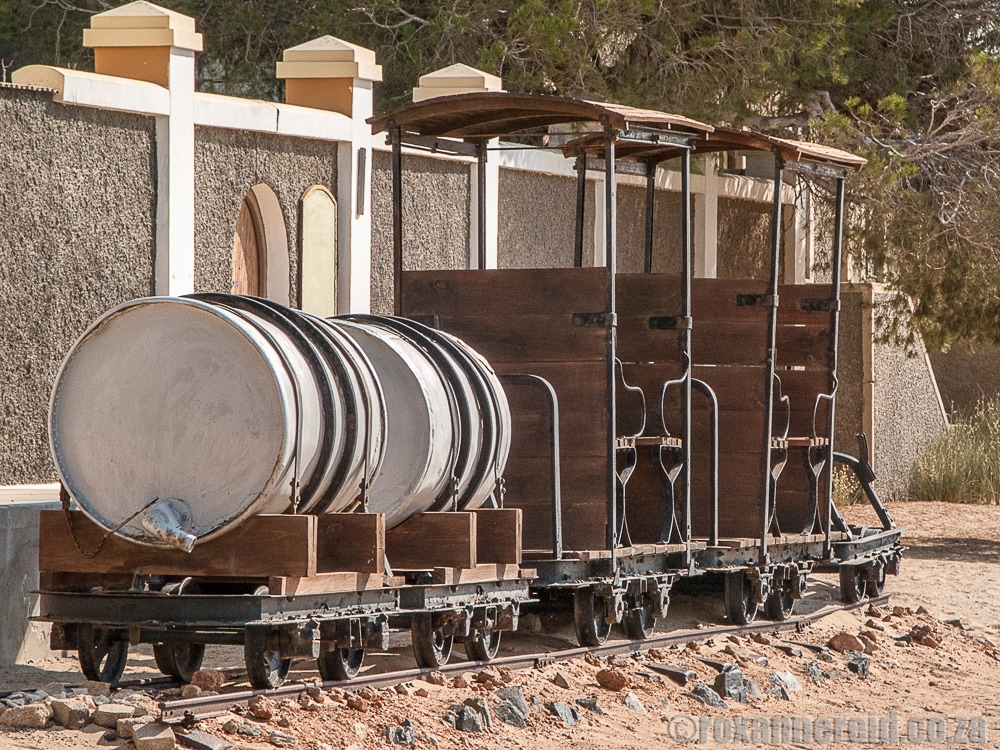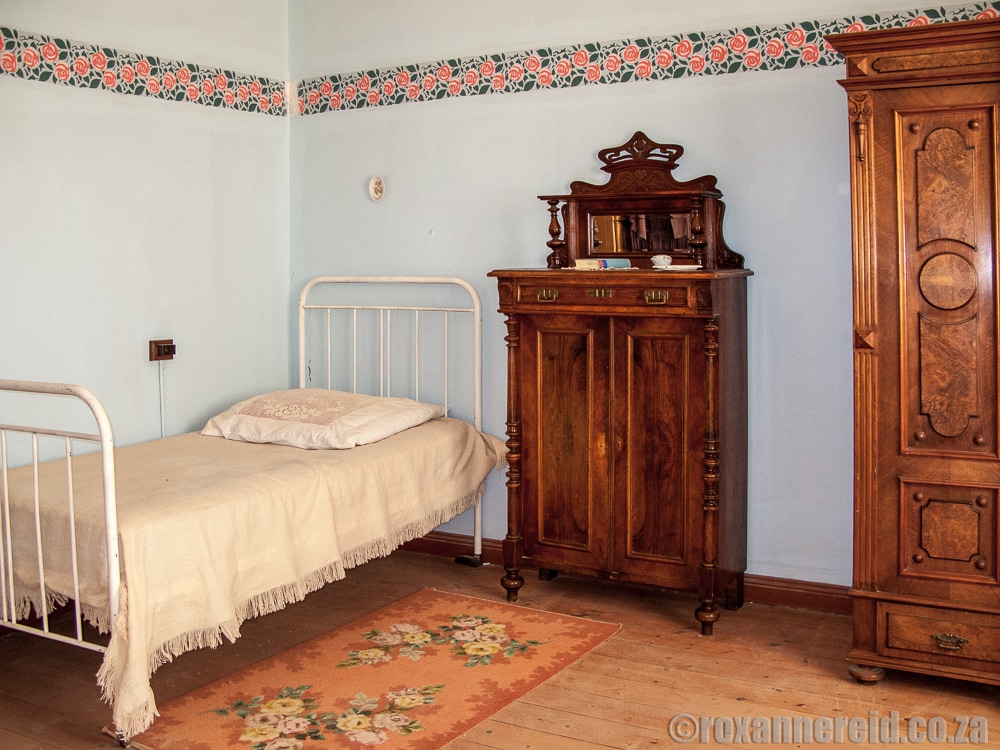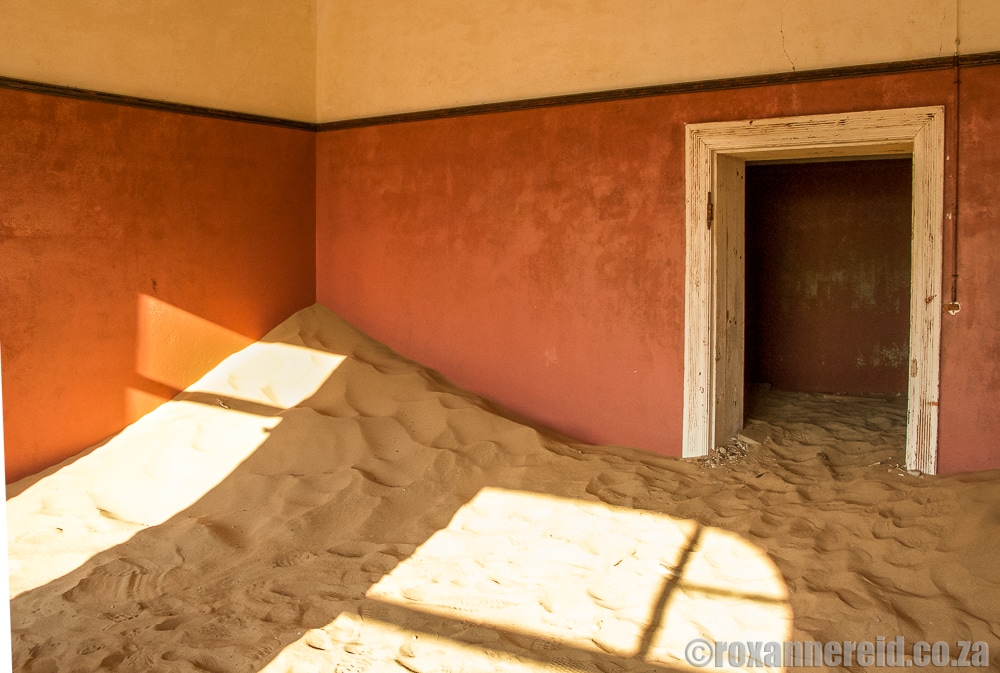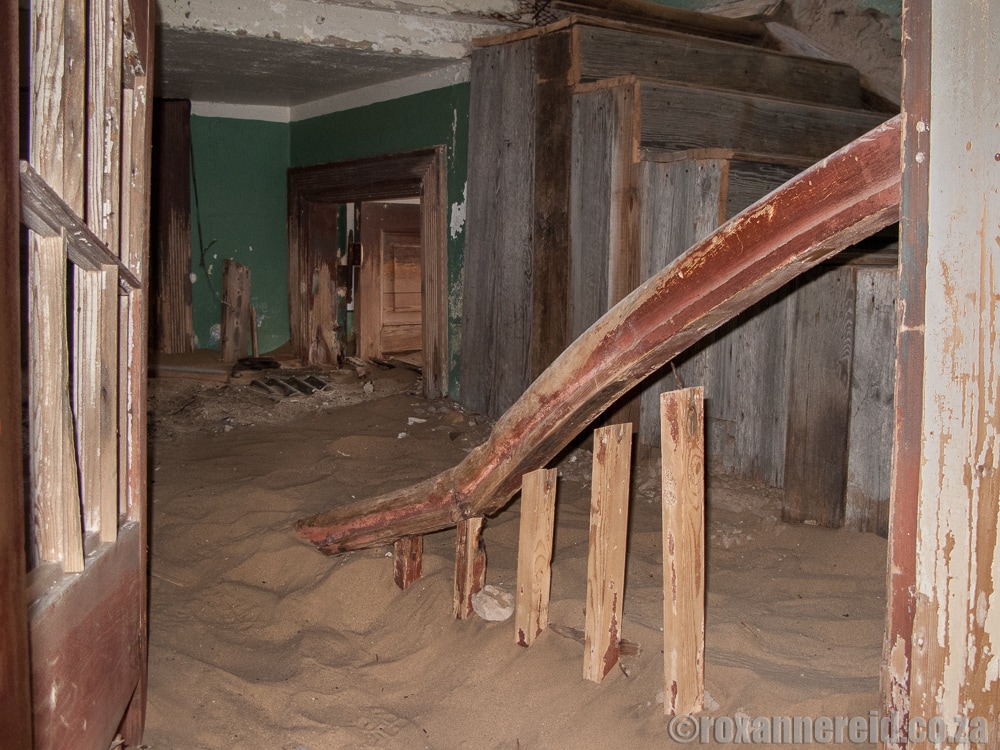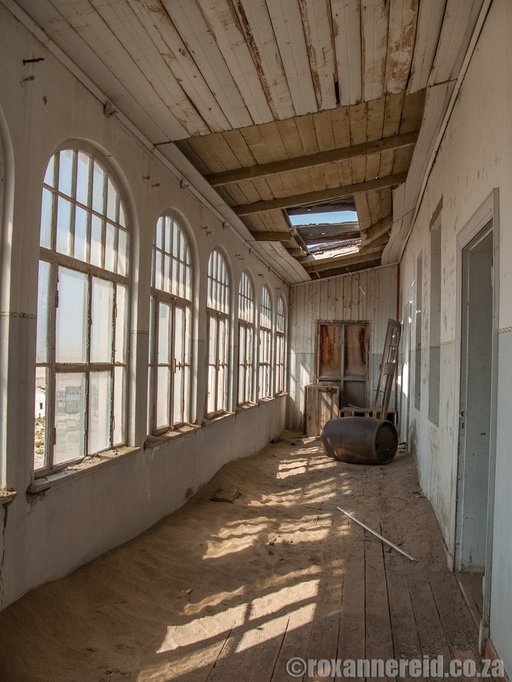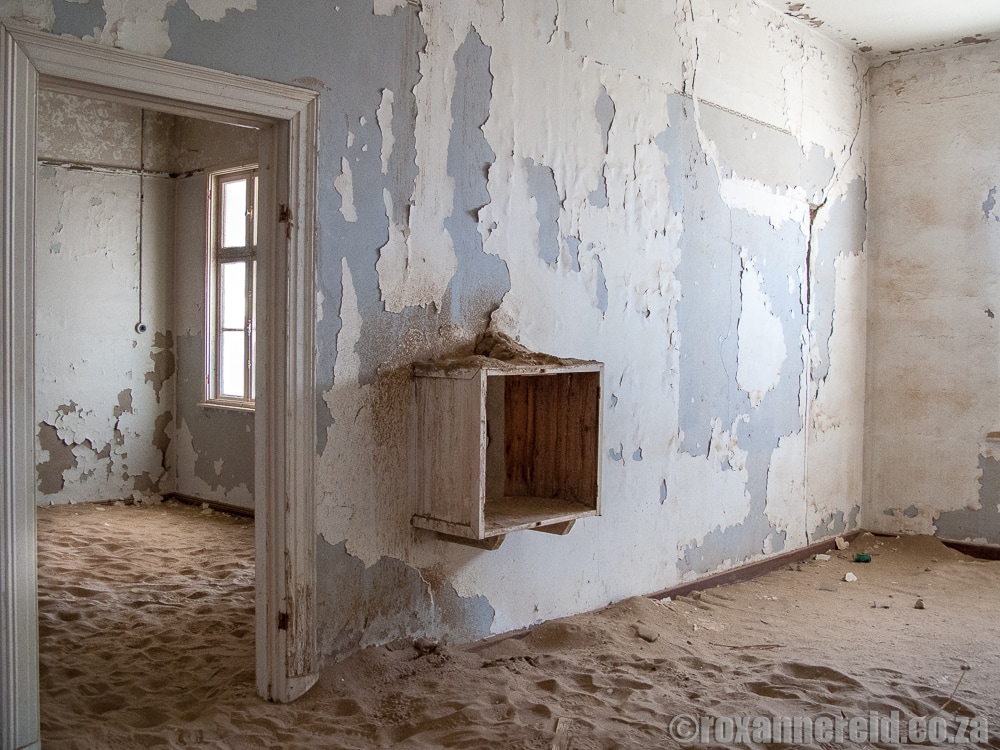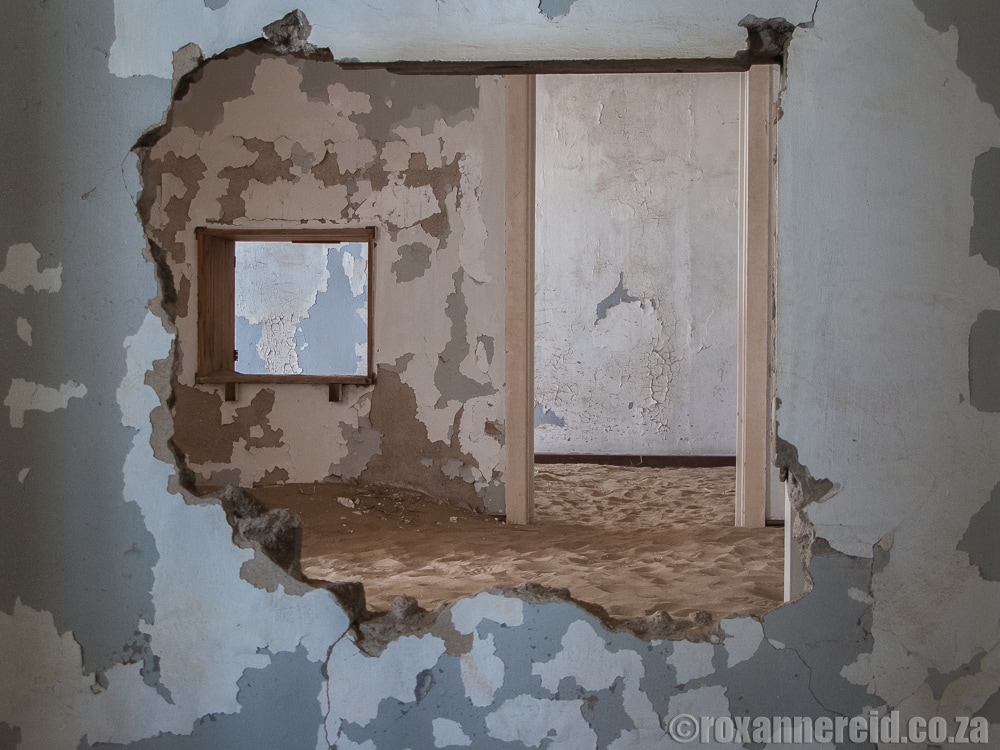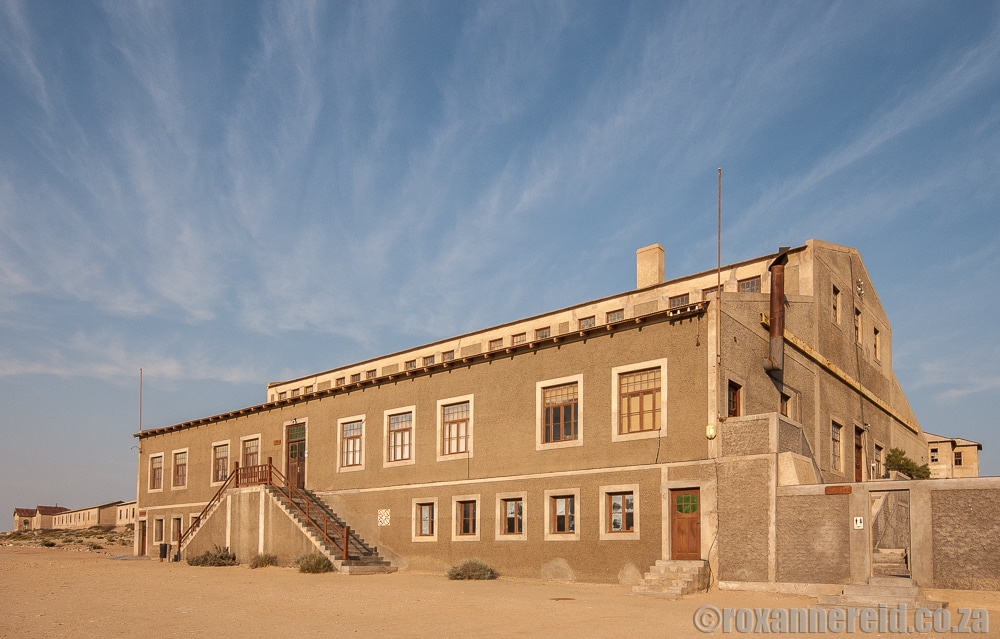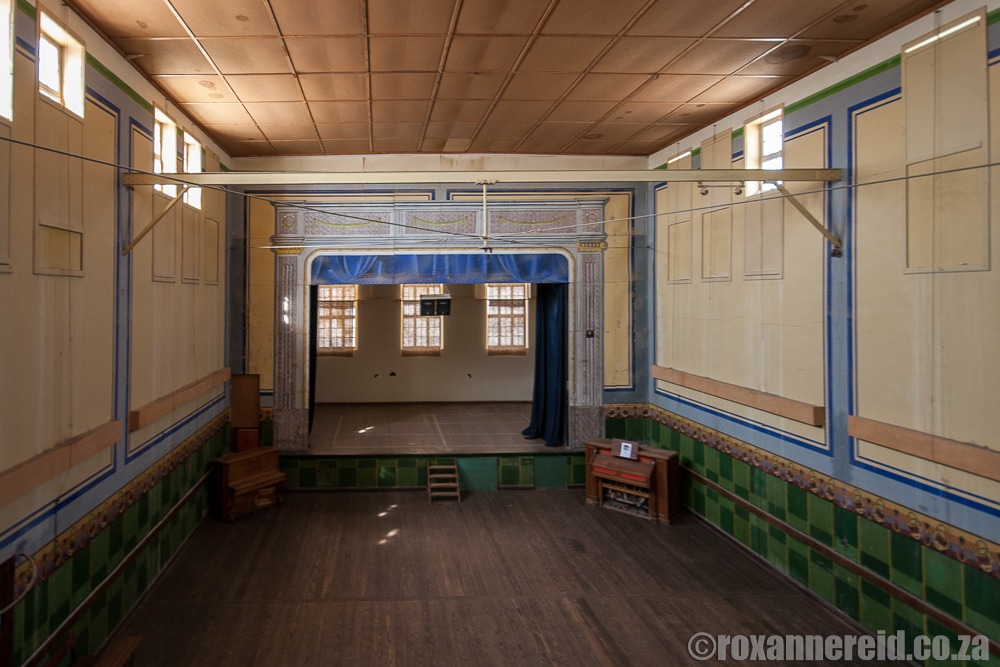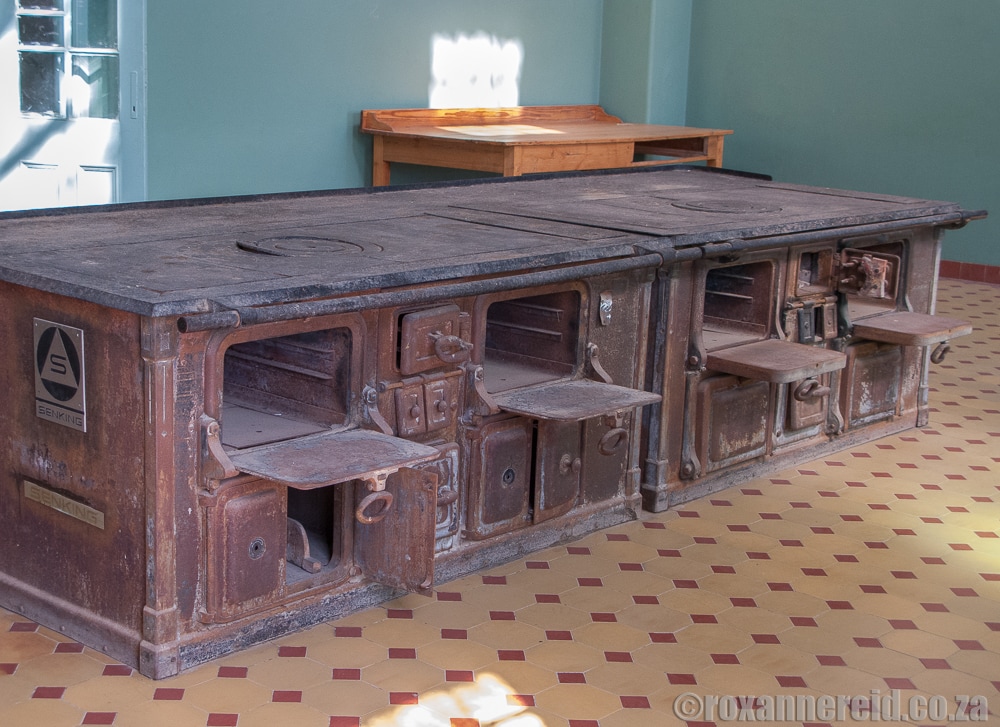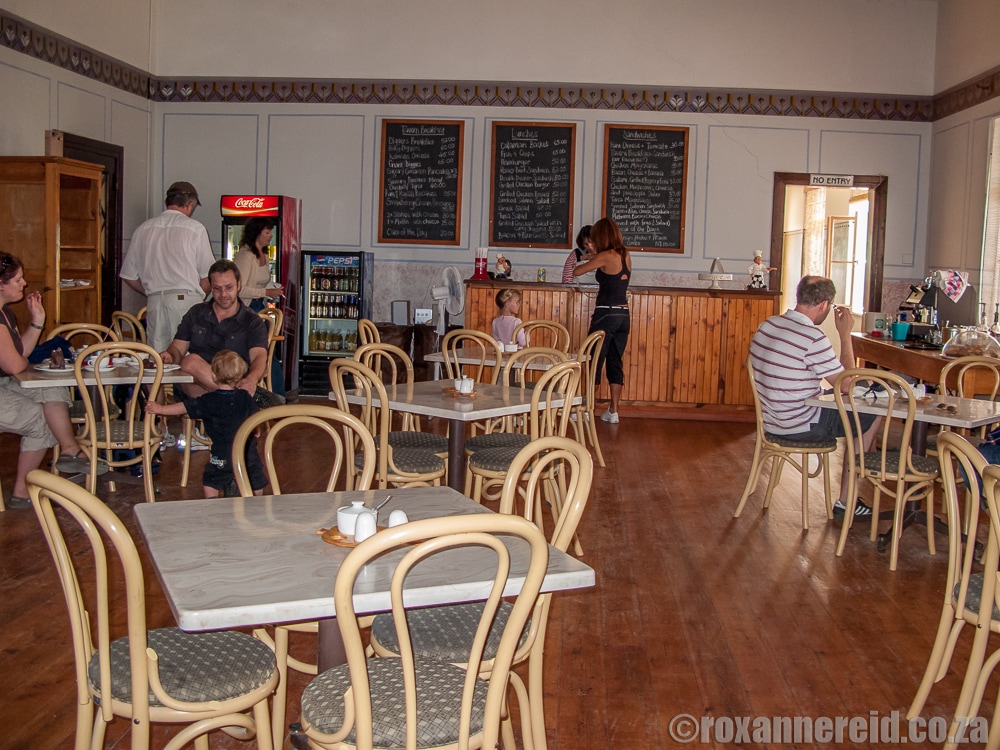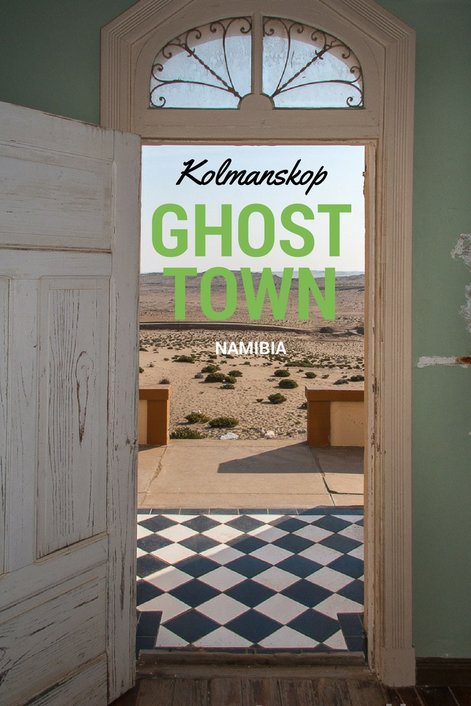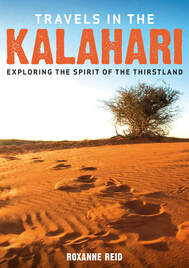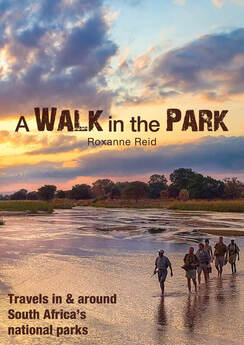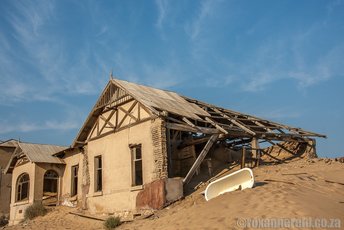
I’ve talked before about how diamonds at Kolmanskop were so plentiful in the early 1900s that you could pluck them by the fistful off the open ground. The boom didn’t last long, but during its heyday some 1300 people lived and worked here. Today past and present collide with haunting magnetism at Kolmanskop ghost town in Namibia.
Our guide Netley Beukes said the most photographed house was that of the teacher, who the architect must have disliked. In the teeth of the wind, its one whole side had been ripped away and the house was almost entirely filled with sand. By contrast, the shrewd architect’s house was built more solidly and out of the path of the wind.
‘Well, the engineer planned and laid the water pipes so he was able to build his house right next to them, and he drilled a little hole that “leaked” water to his house,’ she said. The story goes that he had two beautiful daughters, and it was said that they could ‘turn a desert into a garden’.
I couldn’t help noticing that the bachelors’ quarters, in what was called the ‘Bull’s convent’, were almost next door – and I wondered how much the engineer worried about having them so close to his lovely daughters.
I felt the sadness oozing from beautiful homes that were falling apart, abandoned and no longer loved. Drifts of sand edged doors open, thirsty woodwork cracked and peeled, broken windows gazed out into the desert. All was silent but for the odd rumble from the main road as a truck passed on its way to Lüderitz, and a lonely bird that chirped briefly from a sand dune and then was gone.
Looking at Kolmanskop now it’s hard to believe that it was once a bustling little town with a post office, police station, entertainment hall, school, hospital, general dealer, baker, lemonade factory and butcher. The butcher got his meat from farms nearby, though here in no man’s land ‘nearby’ was actually a hefty 140km away.
A huge rectangular rusted steel tank used to hold seawater for washing the diamonds and for the ice factory, which also made lemonade. The tank doubled as a swimming pool on the weekends.
Electricity and ammonia gas at the ice factory cooled the sea water so that ‘forms’ of fresh water immersed in it would freeze. Each house got half a block of ice a day for their ice-boxes. Cooled sea water was continuously pumped through pipes that cooled the butchery’s cool room on the other side of the wall.
Each person was allowed 20 litres of water a day free; if you needed more you had to buy it yourself – at half the price of beer. For the wealthier residents, the water could create small patches of lawn and garden to keep the dust down. To tempt people to work and live here, wages were good and almost everything was free, from company housing to milk deliveries, even the services of a sweeping team to keep the streets from becoming shrouded in drifting sand.
‘The shop-owner was one of the richest women in Kolmanskop because if you didn’t have money you could pay her in diamonds,’ said Netley. The shopkeeper’s house alongside is furnished with items that were dug out of the sand from around Kolmanskop.
The hospital on the edge of the little settlement could take 200 patients. It had the first x-ray machine in southern Africa, but it was brought here more in case you spiced up your lunch with a few diamonds than for any medical benefit. Two German doctors and four nurses were on hand. Rumour has it that one of the doctors was popular for his habit of prescribing an evening tonic of champagne and caviar sandwiches.
The irony of their solidly built houses, hospital and entertainment hall apparently eluded them.
Entertainment hall and skittle alley
In a desert wasteland far from their homes in Germany, the townsfolk would obviously need something to entertain them if they weren’t to get into trouble for the wrong sort of activities that flourished in so many other early diamond towns. Think drunken debauchery, gambling and prostitution, for instance.
You can do a 60-minute guided tour at Kolmanskop, Mondays to Saturdays at 9:30 and 11:00, Sundays and public holidays at 10:00. Or you can pay your entrance fee and wander around on your own. We did both and were so engrossed in history, ripples of light and shadow, sand-packed buildings and forgotten dreams that four or five hours were gobbled up before we noticed.
Don’t come in a hurry. You’ll probably only visit once in your life so take some time to go into the buildings, soak up the atmosphere and think about the people who used to live and work here. Try to imagine what it must have been like when children ran and played in this monster sandpit, when women in long dresses enjoyed a show in the theatre or local workers dreamt of keeping just one or two diamonds for themselves, when people laughed and cried and made a life here.
Did you find the article interesting? Pin this image!
Kolmanskop: why to visit Namibia's ghost town
Luderitz, Namibia: colourful hamlet in a windswept landscape
Copyright © Roxanne Reid - No words or photographs on this site may be used without permission from roxannereid.co.za
